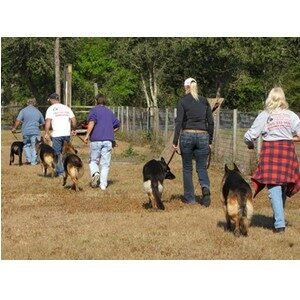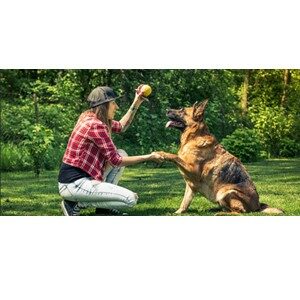Positive Reinforcement For Dog Training
Positive Reinforcement Is A Win-Win For Dog Training!
Factors That Impact Positive Reinforcement Dog Training
We provide five factors that can help you to use positive reinforcement in dog training.
1). What Is Positive Reinforcement Dog Training
2). Understanding Your Dog’s Body Language
3). What Does Positive Reinforcement Accomplish
4). Why Is It Effective
5). Non-Confrontational Punishments
Just click on any of the topics that are of interest to you and you will be taken to that topic’s section. Or, just scroll down to read them all.
Introduction
When using positive reinforcement for dog training it provides a way of rewarding your pet when they perform the correct behavior. Using treats is an excellent way of rewarding their good behavior. You can also use verbal praise and toys as well.
When you are trying to change a bad dog behavior, it will take patience and positive reinforcement on your part to achieve the results you are looking for.
Dogs learn by doing the right behavior over and over again. When using treats and praise it’s a great way to communicate to him that he is performing the right behavior.
Never ever hit your dog for any reason as this will make the dog to fear you. Never begin any training sessions when you are angry, upset or feeling ill. Dogs can sense these feelings of their owners.
What Is Positive Reinforcement Training
Positive reinforcement dog training is also known as force-free training. What this does is to reward your dog for doing any correct behavior or action and will not punish him when they do not perform the correct behavior. Let’s look as some of the things that this type of training uses:
- Positive Reinforcement
- Non-Confrontational Punishments
- The Dog Does Not Assert Their Dominance
- Understanding Your Dog’s Body Language
Now, let’s look at each of these below.
Positive Reinforcement
This is the most important of all the points listed above. When using this concept, you will be using treats, toys, and praise to get your dog’s attention and use them to reward them when they perform the correct behavior. Using positive reinforcement will guide your dog in doing the right behavior.
For example, if you are training your dog a new command, only reward him with a treat and praise when he does the command correctly. Never give praise or a treat when your dog does not perform the correct behavior. This will give your dog mixed signals and will have difficulty in trying to perform what you want him to do.
Remember, your purpose is to train your dog to do commands and change certain behaviors and you want to leave the training session on a positive note. This will make your dog look forward to the next session.
Non-Confrontational Punishments
If during a training session your dog does not perform the correct behavior, some owners will hit, kick or yell at their dog. This must be avoided at all costs. If you use this method it will only increase the stress and make an aggressive more aggressive. This totally defeats the purpose of dog training.
Another factor, is do not train your dog when you are upset or mad as your dog can sense your mood. If you feel this way, it is best to put aside dog training until you have calmed down.
The Dog Does Not Assert Their Dominance
If in the course of a training session, your dog does not listen to you they are not asserting their dominance. They just might have a difficulty in a communication breakdown. Your dog does want to understand and communicate with their owners.
Another thing, if your dog has issues in trying to understand your communication it can cause immense anxiety, stress, and fear. This may require extra work on your part so that the both of you understand each other.
Be sure you have established a clear set of rules and guidelines so that you can live together in a good relationship.
Understanding Your Dog’s Body Language
Sometimes dog owners fail to remember that dog’s cannot speak. However, dogs do emit or show some body languages that if you are alert to them, you know what your dog is trying to tell you. Below are some of the most common.
- Downward Dog. When your dog does this it means they are ready for playtime.
- Nose and Lip Licking. This is a normal grooming behavior after mealtime. All other instances signals anxiety, fear or caution.
- Tightly Closed Mouth. A normal dog’s mouth is open. When it is closed, means they are wary or distrusts something that is nearby.
- Tucked Tail. This signals your pet is afraid.
- If they tremble or shiver to a new person or another dog, it means they are scared. If it’s cold outside, put a cover on them.
- Rolling Over and Exposing The Belly. This is a submissive move on your dog’s part. It could mean they are afraid or they trust you and want you to rub their belly.
- Licking Paws Excessively. It could mean a skin condition like atopic dermatitis. This also can show that they are bored.
- Ears Forward. If ears are forward or facing up means you dog is at attention. They can easily move into a playful mood or get aggressive depending on the situation.
- Licking Humans. This is a sign of affection.
- Tall Erect Stance (Relaxed). A dog who stands tall and relaxed, or has their mouth open and tail wagging, is happy to see you.
- Curved Tail. Your dog is feeling threatened and may snap or bit next.
- Any dog who paces back and forth is full of anxiety. If this happens just before you leave the house, your dog may be suffering from separation anxiety.
- Raised Fur. When the fur on their back and hind quarters stands on end or bristles, they are on high alert and easily excitable.
- This helps the dog to cool themselves down on hot days. It is also a stress reliever for them. However, a constantly panting dog is a dog full of worry.
- This is an indicator your dog is going to be aggressive is a full-body stiffing. It is associated with alert ears, tall stance, wide eyes and a closed mouth.
- Crotch Sniffing. A dog’s sense of smell if 10,000 times more powerful than ours. They use this to gather information about you. When they sniff in this area they are saying “What’s Up?” This is what dogs do when they greet other dogs by sniffing their butts.
- Baring Teeth. This is an aggression ladder step. It means their behavior is escalating.
- Wet Footprints. If you see damp paw prints in the house when it has not rained, this could be a sign that your dog is stressed out. If you should see this check in on their anxiety levels.
- Destructive Behavior. If your dog should destroy stuff when you are away, they are suffering from separation anxiety. They lash out because they afraid and need attention.
- Ears Low and Back. If you see this with a wagging tail it means your dog is happy and calm. If you hear growls or aggressive behavior, you dog is ready to pounce.
- Low Growl. They are associated with aggression and warding off threats.
- High Growl. If you hear these growls they tend to be more playful and you hear them when you play games like tug-of-war.
- Short Growls. This is a sign of letting you know they are assessing the situation. They could be scared or uncertain about something.
- Long Sustained Growls. Your dog has made up their mind to deliberately growl at something. The longer the growl, the more serious is your pet.
- High-Pitched Bark. Your dog is happy to see you.
- Low-Pitched Bark. They are afraid of you and may fight back.
- If your dog should wine it indicates they need something. If they are whining around their food bowl, they are hungry. If they are wining at the door, they want out.
- This is to let you know that they are content.
- Circling Before Lying Down. Dogs will circle a comfy spot before lying down. Their ancestors did the same thing. This is a natural trait.
- Wide Eyes, Direct Stare. Large, open, alert eyes staring at an opponent means your dog is ready for combat. If you see lots of white around the pupils it means big-time aggression.
What Does Positive Reinforcement Accomplish?
Let’s look at some of these benefits.
- Helps build a strong bond with your dog on trust and respect.
- Avoids increasing their aggression or anxiety.
- Uses fun and easy training methods for all family members to get on board with.
- Helps your dog’s mental stimulation, prevents boredom and other potential problem behaviors.
- Uses treats, toys, and praise to get your dog’s attention and guides them into making the right choice over and over again.
Remember, dogs cannot speak. Owners must learn to recognize their dog’s body language and base the dog’s perceptions on the cues given. Refer to the body language section above.
When training your dog, never use harsh punishments as it will be difficult for your dog to learn a new behavior as they might begin to fear you. Thus, defeating the purpose for the training exercise in the first place and trying to bond with your pet.
Why Is Positive Reinforcement Effective
Positive reinforcement training is effective because it uses a reward like treats, praise, toys, or anything the dog finds rewarding, for desired behavior outcomes. The reward makes dogs more likely to repeat a specific behavior or command knowing he will get rewarded for doing it over and over again.
Using positive reinforcement is one of your most powerful tools as a pet owner for shaping and changing your dog’s behavior.
Dogs can sense when their owners are in a bad mood, mad or upset. It is wise not to conduct any training sessions under these circumstances as it may not be rewarding for you and your pet.
Conclusion
Positive reinforcement training is an excellent way to train your dog to do or change a specific behavior. For dogs to change their behavior, it requires the owner to train them. This requires taking time to be with them and setting up specific training sessions.
Positive reinforcement does not include doing any harsh treatments to your dog like kicking, hitting, or yelling at them, when they do not perform the desired command. As we previously stated before, this will only make your dog to fear you.
Always give your dog a reward for doing the correct behavior or command. You can use verbal praise and treats that he likes. Never reward your dog for doing the incorrect behavior or command as this will send him mixed signals.
Remember, this time is for you and your dog to bond together. Doing training exercises is a way for your dog to know you better.
Always use positive reinforcement and you will be surprised on how quickly your dog will respond to you when trying to change his behavior.
Go back to the Dog Luxury Beds home page.

